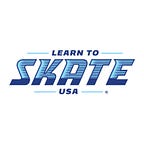Skating at 60: A Valuable First Lesson
Learning to fall safely was the easy part of my first Learn to Skate USA® class. Getting up was a different story.
EDITOR’S NOTE: For her 60th birthday, Mary Ullmer bought a pair of ice skates to rekindle the joy of recreational skating in her youth. A professional journalist whose career has spanned from her small hometown newspaper to her current job at ESPN, Ullmer will share her experiences as she goes through the Learn to Skate USA® program.
When I arrived at Lakeshore Skating Academy for the first of my three Learn to Skate USA® classes, I was curious. How many people would be taking basic skating lessons? Would I be among other adults who decided to take up skating again later in life? Would I be the oldest?
The simple answers: A lot, no and yes.
A lot of people signed up for lessons and were ready to hit the ice for the first session. No, I was not among other adults, unless you count the parents and grandparents who brought children to the rink. And yes, I was definitely the oldest — by about 50 years.
It was surprising to me that I was the only adult in the program. I wasn’t at all embarrassed about that fact, even when one of the kids in my Basic 1 group asked, “Why is that old person here?” Brandi Angelosanto, the skating instructor who would be teaching our group of about 10 (there are five or so groups, separated by skating ability), shot me a quick look and, in an effort to save me from embarrassment, replied, “Because this is a class for all ages.” I simply laughed it off. I was there to learn to ice skate, not boost my ego.
Our first lesson on Day 1 seemed simple enough: Learn to fall. Brandi explained that yes, we will fall, and when we do, we need to do it safely. She instructed us to fall off to the side rather than head-first (which would result in a faceplant and likely a cut to the chin, or worse). She then demonstrated how to get back up in a way that also put safety first. Kneel on one knee, place both hands on that knee, and push yourself up.
Falling was easy. Getting up was not.
I watched as the 5-, 6-, 7- and 8-year-olds (OK, I think one kid might have been 10 because he was taller than me) popped right up off the ice using the technique Brandi showed us. I, on the other hand, had difficulty with the maneuver. Perhaps it was because I was so much taller than the kids? Because I weighed twice as much (or more) as they did? Or maybe it was just my old joints and bones refusing to cooperate?
Whatever the reason, I struggled, but finally managed to get up. We practiced this “skill” a few times; it never got easier for me. In fact, on my last attempt, I started to fall backward while trying to get to my feet. In a panic, I reached for the closest thing I could grab, which happened to be a young boy named Maverick. Maverick and I both tumbled to the ice. I made sure he was OK and apologized profusely. Maverick assured me he was OK and even laughed with me. I just hoped the adults in the stands watching would forgive me.
Our next lesson: March across the ice, from one wall to the other. Simple enough. After that, it was march five steps, then glide. Nailed it. Next, swizzle, a move where you put your heels together and then your toes, which propels you backward. Now, we’re skating!
Before I knew it, our first 45-minute lesson came to an end and we were instructed to skate a “victory” lap. I was pleasantly surprised to make it easily around the rink before heading off to change out of my skates.
Though I did not master getting back to my feet after a fall, I am not too worried about it. After all, I’m taking skating lessons to learn NOT to fall in the first place.
Read Mary’s first column here.
